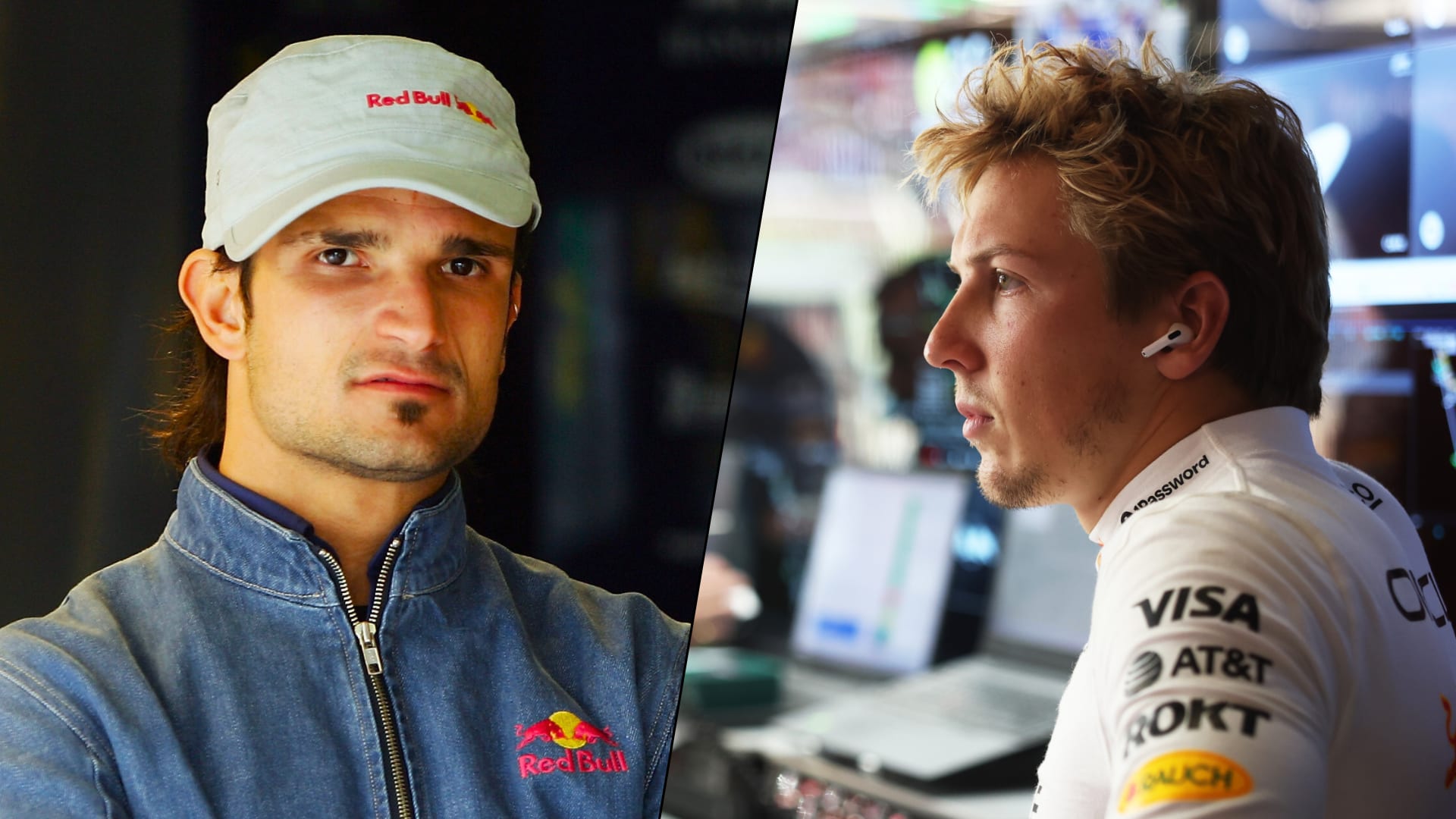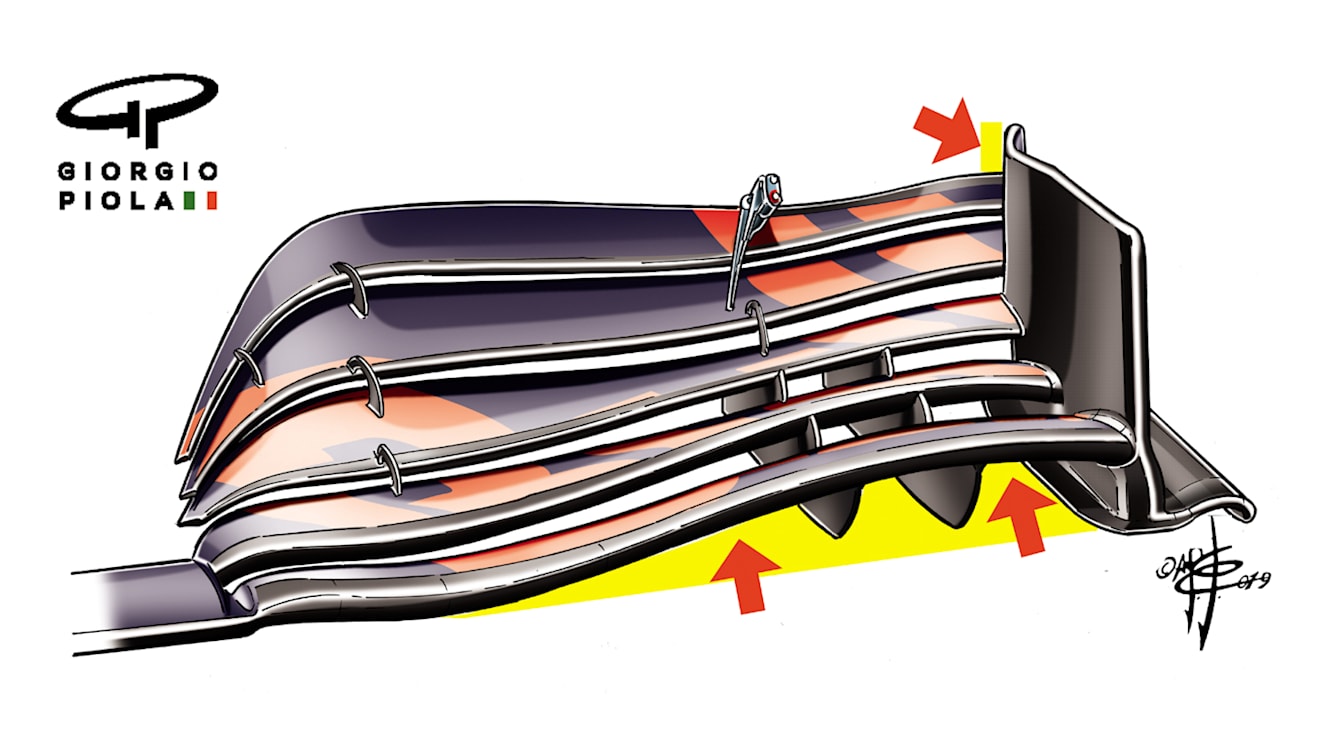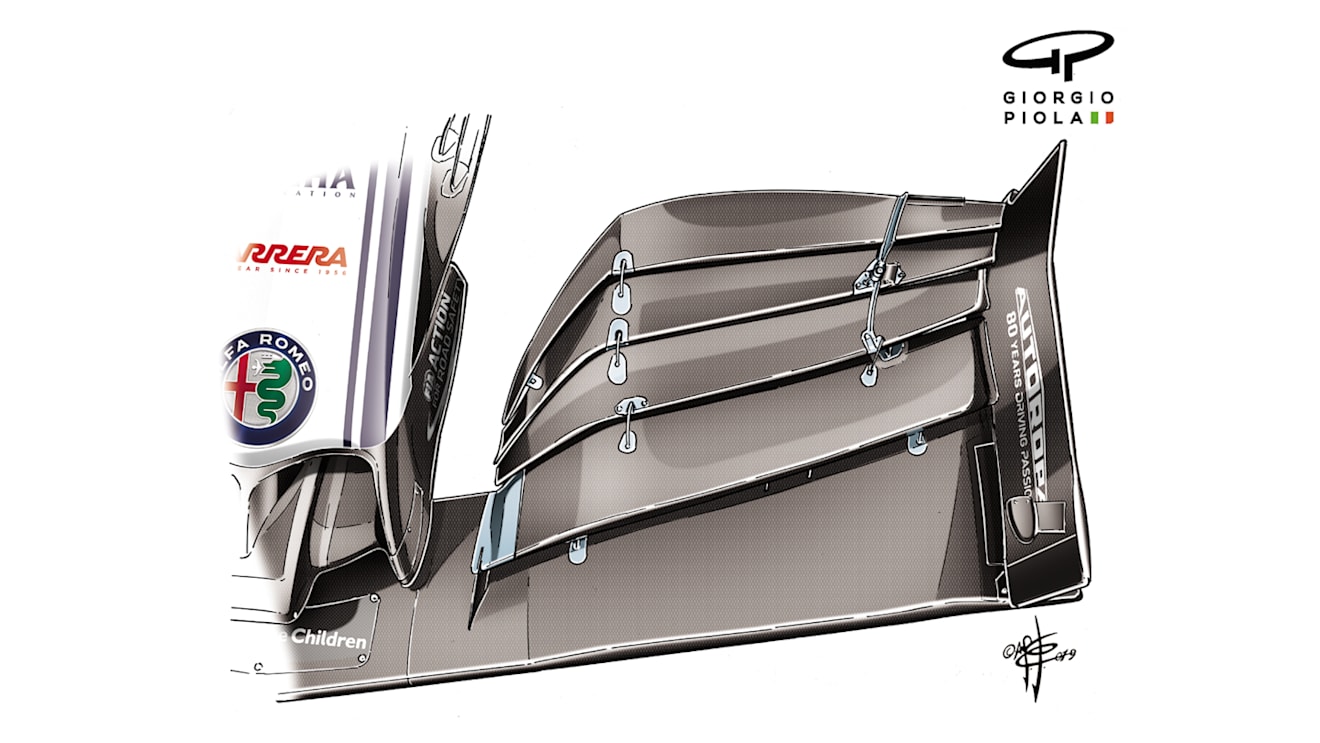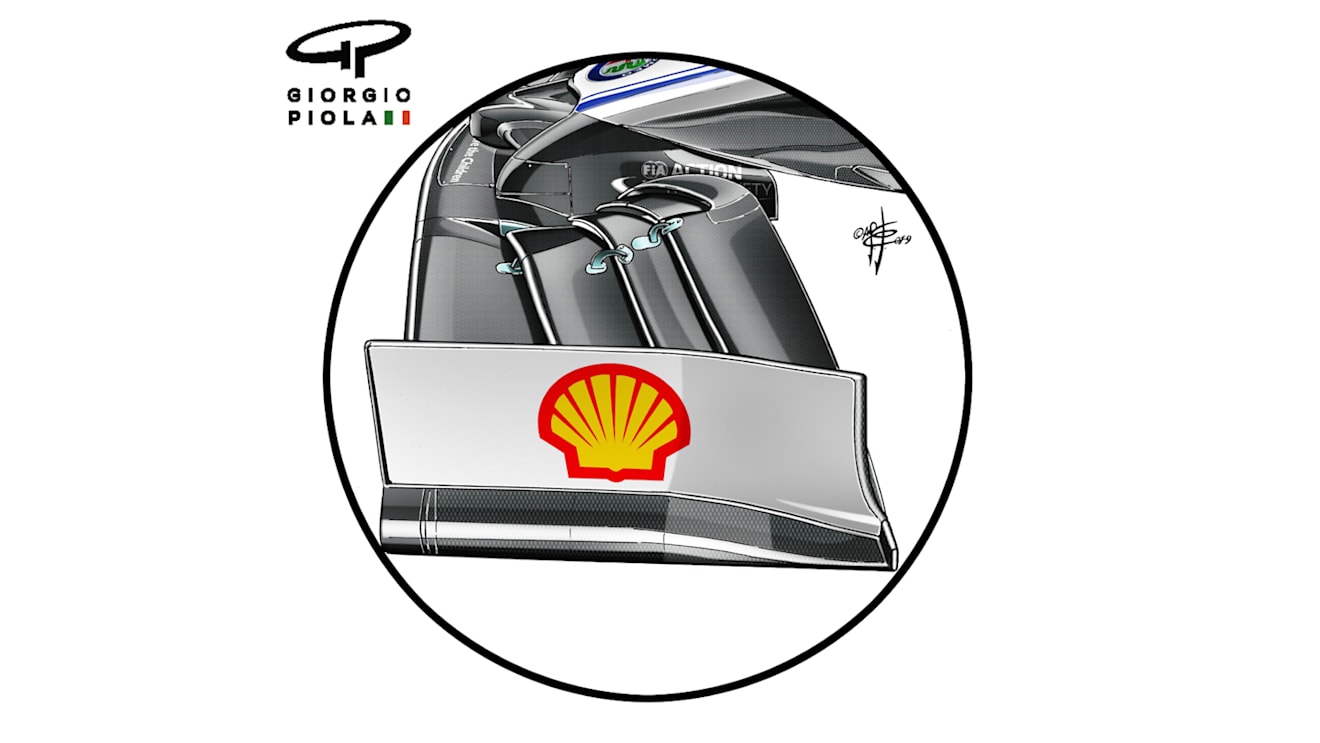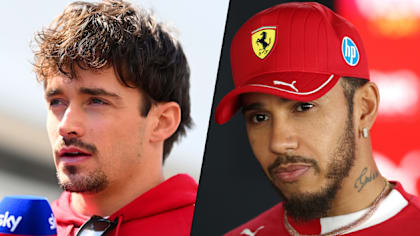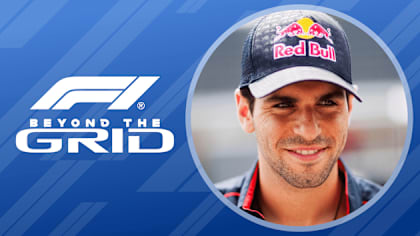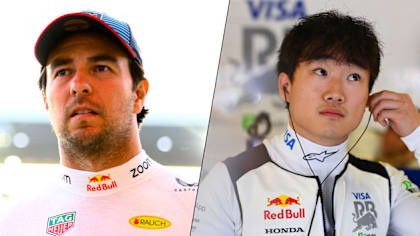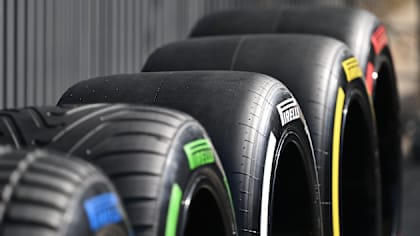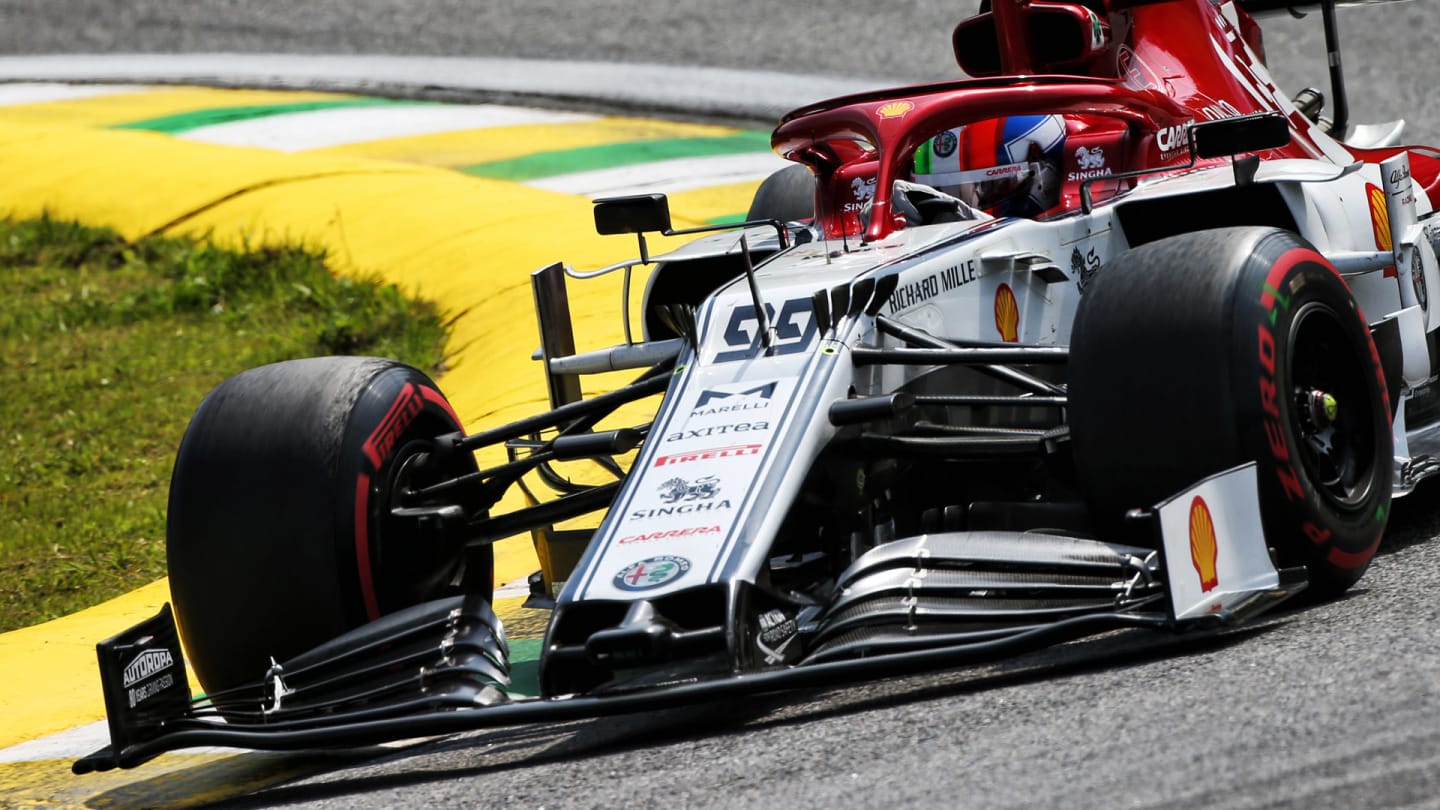
Technical
TECH TUESDAY: The wing designs winning out as focus shifts to 2020

Share

Even at the season’s penultimate race, there were still new parts appearing on some of the cars. The most obvious of these were all-new front wings from both Red Bull and Alfa Romeo.
Although only Alfa raced their new wing, both represent further progressions along their teams’ existing development directions, giving further information to feed into their 2020 cars. Because the aero regulations are largely unchanged for next year, it’s worth continuing with such developments in order to validate simulation work on next year’s cars.
The 2019 aero regulations were all-new and resulted in two opposing schools of front wing concept which, coincidentally, were neatly represented by Alfa Romeo at one end and Red Bull at the other. The outboard-loaded wing was favoured by Red Bull (and Mercedes) whereas the most extreme version of the inboard-loaded wing was that of Alfa (with Ferrari not far behind).
Essentially, the choice is about the trade-off between direct front downforce from the wing and downforce created further back. The outboard-loaded wing uses the maximum permitted depth of elements at the outboard end, to give greater total wing area. The inboard-loaded wing tapers the elements down at the outboard ends and usually features quite dramatic contouring of the elements at the inboard ends.
There are pros and cons to each and there wasn’t initially a definitive ‘right way’. Getting an effective airflow outwash around the front tyres with the outboard-loaded wing is more difficult – and this is a crucial part of the overall aero effectiveness of the car. Keeping the air travelling around the tyres as far outboard of the car as possible all the way down its length allows the underfloor and bodyside airflow to work more effectively, thereby enhancing downforce from the diffuser.
Teams favouring the outboard-loaded wing have sought to enhance its outwash power by featuring a big upsweep of the wing’s lower edge to create a big ‘throat’ area between the ground and the wing’s under surface at the outboard end. The yellow area in the first drawing below of the wing tried by Red Bull during Friday practice shows just how much this throat area has been enhanced compared to the standard wing shown in the second drawing.
1 / 2
The Alfa initially ran extreme tapered outboard ends which allows for a very good outwash, though at the expense of total element area. The heavy contouring in the inboard area helps create good airflow energy to the barge boards, the design of which can be tuned either to favour enhanced underfloor or outwash power. But it’s become apparent as the season has progressed that the outboard-loaded wing is gradually proving to have more development potential and each successive wing development on the Alfa has been a less extreme version of the inboard-loaded concept.
1 / 2
The wing introduced by the team at Interlagos - the first drawing above - moves yet further in that direction. Although the elements still taper downwards toward the outside when viewed from head-on, the separated outboard elements are now shorter, allowing more wing area. Because the inboard sections of this type of wing are working very hard, they can be stall-prone, especially if the elements themselves are too big. The latest wing has divided this inboard element area up into four separate elements rather than the previous three - shown in the second drawing above - to limit the stalling.
All of which suggests that in 2020, the final year of the current aero regs, there will be a greater degree of convergence on this distinctive visual feature than was the case this year.
YOU MIGHT ALSO LIKE
News Leclerc admits double disqualification ‘hurt’ Ferrari as Hamilton left ‘100% confident’ team can fix any problems
Podcast BEYOND THE GRID: Jaime Alguersuari on his record-breaking debut to high-pressure exit
News ‘He has the right attitude to cope with it’ – Perez backs Tsunoda to perform following Red Bull promotion
News What tyres will the teams and drivers have for the 2025 Japanese Grand Prix?
